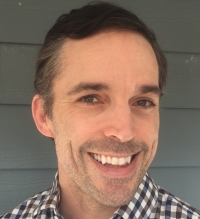In the new study, led by Joseph DeGutis, HMS associate professor of psychiatry at VA Boston, the researchers found that face blindness lies on a spectrum — one that can range in severity and presentation — rather than representing a discrete group. The authors also provide diagnostic suggestions for identifying mild and major forms of prosopagnosia based on guidelines for major and mild neurocognitive disorders in the DSM5, the 5th edition of the Diagnostic and Statistical Manual of Mental Disorders.
The study results are based on a web-based questionnaire and tests administered to 3,341 individuals. First, the researchers asked participants whether they experience difficulties recognizing faces in their everyday lives. Then they administered two objective tests to determine whether they had difficulties learning new faces or recognizing highly familiar, famous faces.
The results showed that 31 individuals out of the 3,341 had major prosopagnosia, while 72 of the 3,341 had a milder form. The researchers also observed that there were no neatly divided discrete groups of people with poor or good ability to recognize faces. Rather, the ability to recognize faces appeared to lie on a continuum, they said.
Finally, the researchers compared face-matching scores among people with prosopagnosia diagnosed using different criteria and found that using stricter diagnostic cutoffs did not correspond with lower face-matching scores.
Harvard Medicine News spoke with DeGutis, the study’s senior author, about the implications of the findings.
Harvard Medicine News: Let’s start with the basics. What causes face blindness?
DeGutis: Prosopagnosia, or face blindness, can be caused by a brain injury to occipital or temporal regions, referred to as acquired prosopagnosia, which affects one in 30,000 people in the United States. Prosopagnosia can also be a lifelong condition caused by genetic or developmental abnormalities, referred to as developmental prosopagnosia, affecting one in 33 people.
HMNews: This is a fascinating condition, but some might say that it’s not a serious health disorder so why is it important to study and understand it?
DeGutis: First, face blindness can be a socially debilitating disorder that can limit employment opportunities. For example, networking is extremely difficult for people with prosopagnosia and can cause social distress and embarrassment. Recognizing someone is a social signal, indicating that “you are important to me.”
Prosopagnosia can also affect individuals on the autism spectrum and can be a consequence of age-related cognitive decline as well. In a world where social isolation is on the rise, especially in teens and young adults, fostering and maintaining social bonds and good face-to-face interactions are more important than ever.
HMNews: What sparked your interest in this field? What is it about how the brain sees and remembers faces intrigues you the most and why?
DeGutis: Face blindness is fascinating on several levels. Humans are remarkably good at recognizing familiar faces and this is done with very little effort. We know that this face ‘super-power’ relies on several specific perceptual processes: holistic face processing-seeing the face as an integrated whole, for instance; memory processes, readily associating faces with person-related knowledge; and specialized brain mechanisms and regions, too, such as the fusiform face area.
Our knowledge about face recognition in unimpaired individuals provides a very solid framework to understand the ways these processes can break down in prosopagnosia. The processes also provide clues on how to improve face recognition in people with face blindness, which is one of the major goals of our lab. Finally, studying prosopagnosia is fascinating from a phenomenological perspective—what do people with face blindness actually “see” when looking at a face? What comes to mind when they think about a familiar friend’s face?
HMNews: You say that your findings call for an expansion of the diagnostic criteria. Why is that important?
DeGutis: This is important on several levels. First, the majority of researchers have used overly strict diagnostic criteria and many individuals with significant face- recognition problems in daily life have been wrongly told they do not have prosopagnosia. Expanding the diagnosis is important because knowing that you have real objective evidence of prosopagnosia, even a mild form, can help you take steps to reduce its negative impacts on daily life, such as telling consequential coworkers, or seeking treatment.
Recent evidence suggests that people with milder forms of face blindness may benefit more from certain treatments than people with more severe forms of the condition. These treatments might include cognitive training to enhance perceptual abilities or training aimed directly at improving face associations.
Finally, factors such as age-related cognitive decline and social anxiety can further worsen face recognition abilities. Knowing if you have mild prosopagnosia could help you keep an eye out for further situational or age-related declines in face-recognition ability.
HMNews: What do you want clinicians and individuals with the condition to take away from these results?
DeGutis: The take-home message is that prosopagnosia lies on a continuum and stricter vs. looser diagnostic criteria employed in prosopagnosia studies in the past 13 years have identified mechanistically very similar populations, providing justification for expanding the criteria to include those with milder forms of it.
Another take-home message is the importance of using a combination of self-reported daily-life difficulties and validated objective measures when diagnosing prosopagnosia. There are pros and cons to relying just on self-reports because it can be challenging to judge your own abilities or relying solely on objective lab measures that may not reflect everyday life.
This interview was edited for length and clarity.
(Reprinted with permission from the Harvard Gazette.)














